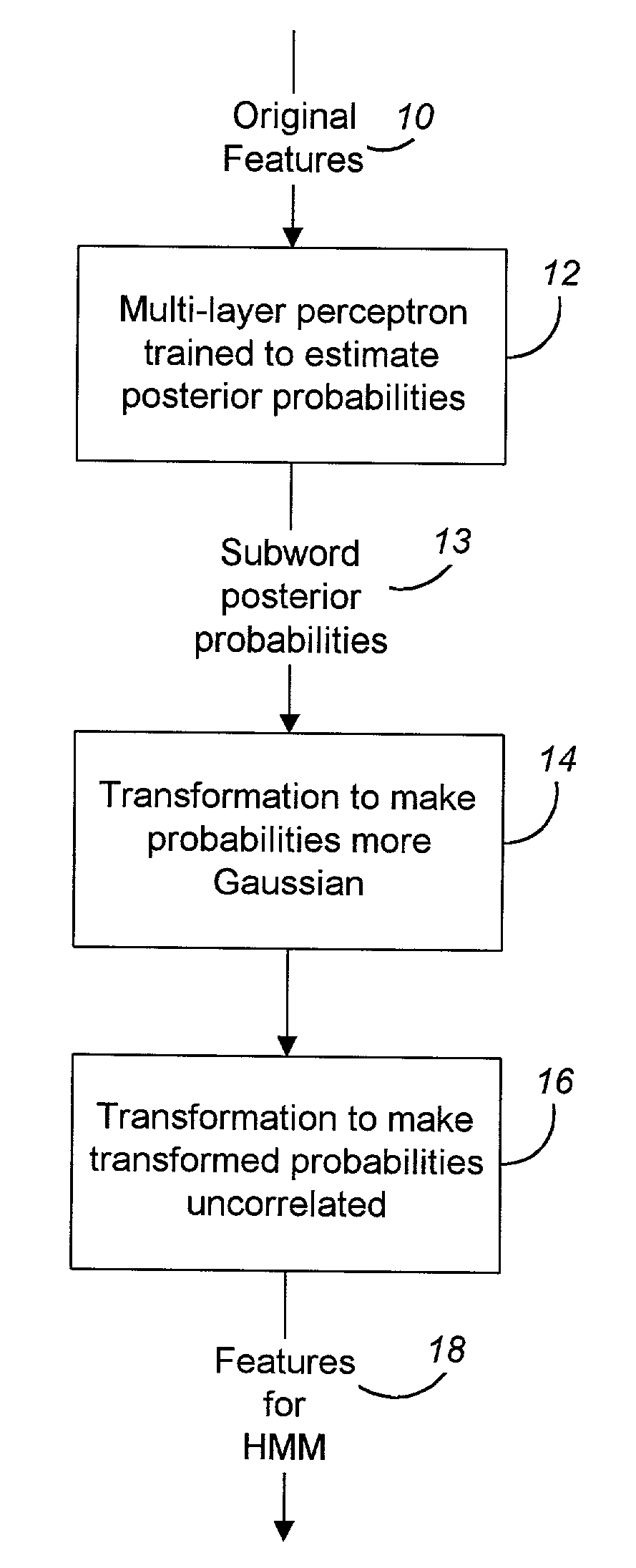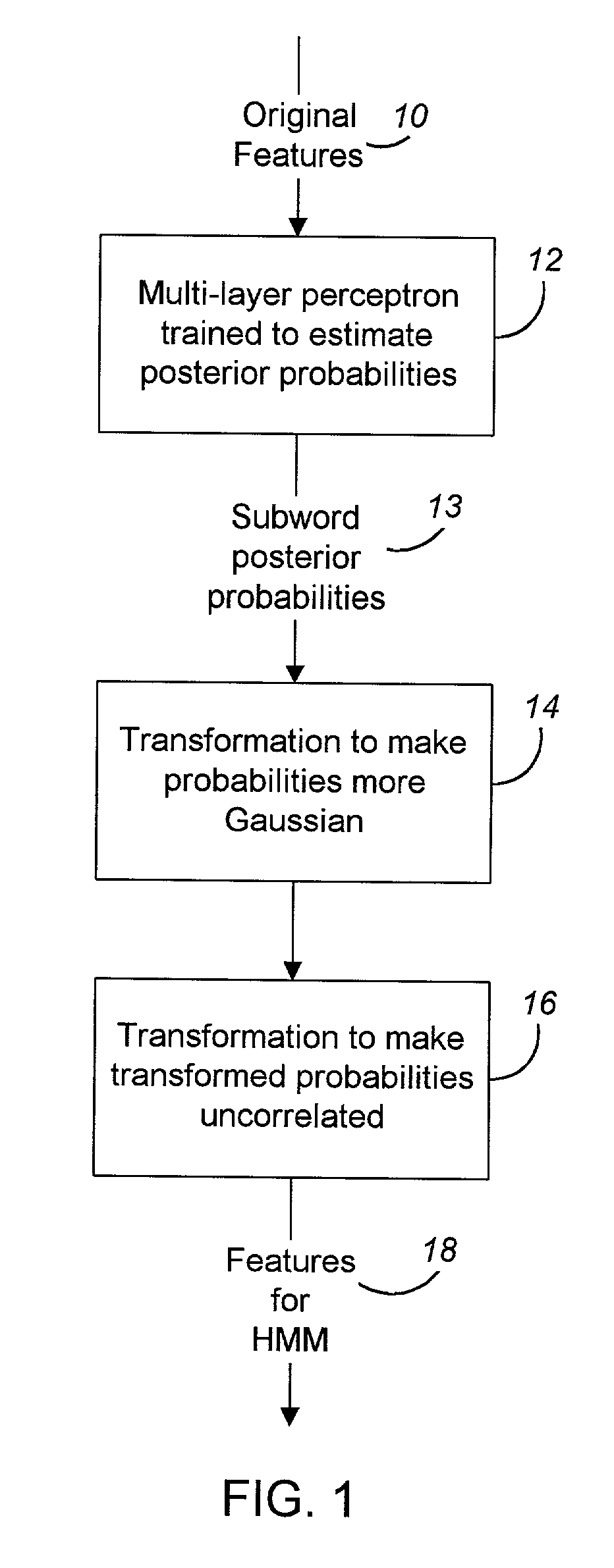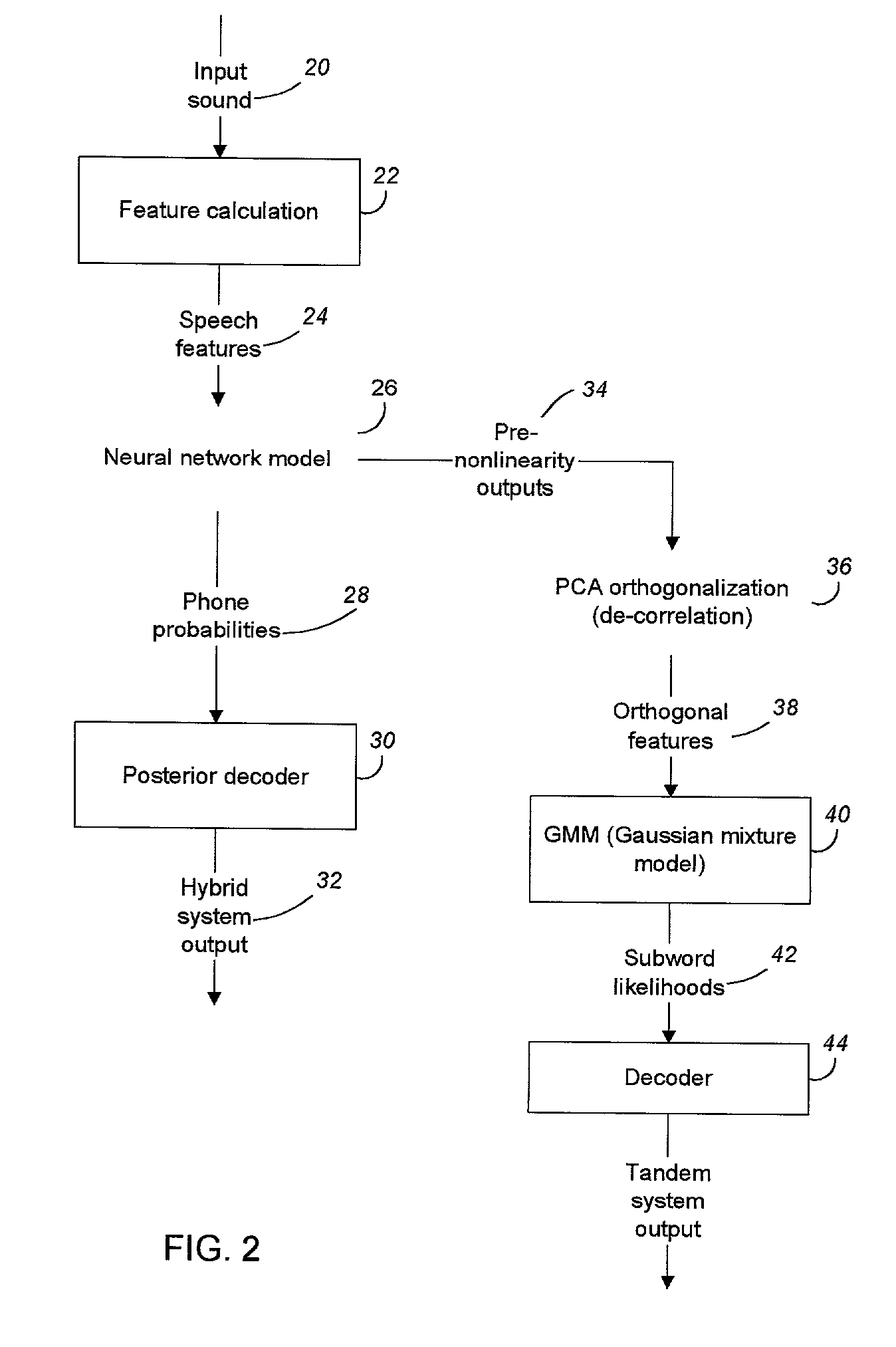Nonlinear mapping for feature extraction in automatic speech recognition
a feature extraction and feature technology, applied in the field of automatic speech recognition, can solve the problems that the techniques developed in one domain may be difficult to transfer to the other, and achieve the effects of improving word recognition performance, reducing relative error rate, and substantial error reduction
- Summary
- Abstract
- Description
- Claims
- Application Information
AI Technical Summary
Benefits of technology
Problems solved by technology
Method used
Image
Examples
Embodiment Construction
[0014]A large improvement may be obtained in word recognition performance by combining neural-net discriminative feature processing with Gaussian-mixture distribution modeling. By training the neural network to generate subword probability posteriors, then using transformations of these estimates as the base features for a conventionally-trained Gaussian-mixture based system, substantial error rate reductions may be achieved.
[0015]The present invention provides a means by which a non-Gaussian distribution of subword posterior probabilities may be utilized with a Gaussian distribution model automatic voice recognition system.
[0016]As shown in FIG. 1, original features 10 derived from an audio stream are input to a neural network such as a multi-layer perceptron (MLP) 12 phone classifier trained to estimate subword (phone) posterior probabilities. Training may be done with hand-labeled or automatically labeled data sets labeled for phone identity and timing. The original features 10 m...
PUM
 Login to View More
Login to View More Abstract
Description
Claims
Application Information
 Login to View More
Login to View More - R&D
- Intellectual Property
- Life Sciences
- Materials
- Tech Scout
- Unparalleled Data Quality
- Higher Quality Content
- 60% Fewer Hallucinations
Browse by: Latest US Patents, China's latest patents, Technical Efficacy Thesaurus, Application Domain, Technology Topic, Popular Technical Reports.
© 2025 PatSnap. All rights reserved.Legal|Privacy policy|Modern Slavery Act Transparency Statement|Sitemap|About US| Contact US: help@patsnap.com



